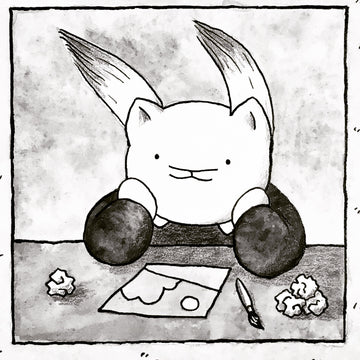Being an art beginner can be frustrating. Researching art can make you feel overloaded with confusing information.
You have ideas in your head that you’re not skilled enough to translate onto the page. You know there’s something off in your latest piece, but you don’t know what that thing is, so you keep erasing random areas and redoing them in the hopes that you’ll guess what was wrong through the process of elimination.
Patience is difficult when you’re learning a new skill. Being a beginner isn’t all bad, though! As a beginner, you have a sense of wonder and a genuine love for the craft that some professionals lose sight of when they forget to make art for themselves. Here are some tips to make your time as a beginner sail by smoothly!

1. Learn the fundamentals right away
The fundamentals of art are the building blocks that make more advanced work possible. You have to keep practising these for your whole life, even if you think you know them well.
These principles are perspective, anatomy, light and shadow, colour theory, and composition. Without understanding these principles, your paintings will look wrong, and you won’t be able to figure out why.
It’s a common myth that you only need to know how to draw realistically if you intend on being a realist artist. The truth is that unless you know the rules for making something look real, you can’t break the rules on purpose to create an exciting style.
When I started, I didn’t pay enough attention to the fundamentals because they looked intimidating and partly because I didn’t know how they fit in with the kind of art I wanted to create.
2. Don’t be afraid to fail
If you’re afraid of failure, that’s usually a symptom of a more profound fear that you haven’t dealt with yet. For example, my fear of failure is ultimately a fear of humiliation and wasting expensive materials.
If I’m afraid to draw something that’s outside of my comfort zone, what I’m actually scared of is using up expensive paper on something that I would be embarrassed to know existed.
If you’re afraid of humiliation, remember that you’re not above or below anyone else, and everyone is allowed to make a mistake because we are all equal.
If you’re afraid of wasting materials, use less expensive materials to try new techniques.
If beginner-grade products don’t work for what you’re doing, remember that it isn’t wasting materials if the project was a valuable learning experience.
3. Use the right materials
I know it’s super tempting to use the cheapest available materials before you’ve decided whether or not you want to commit to art as a lifelong pastime. Still, good materials are necessary if you want an authentic experience of making art.
Student- grade is fine, but understand that you won’t get professional results from diluted paint and woody paper. Watercolour is particularly demanding for material quality, as many of the techniques won’t work unless the paper is 100% cotton.
4. Seek inspiration from unusual places
It’s okay to be inspired by something popular, such as a movie or a video game, but your art will be effortlessly more original if you combine those ideas with ideas you got from somewhere less mainstream.
Is there an obscure book or TV show you love? Was there a regional radio program you grew up with that had an exciting soundscape? What about a specific time or place in your life that nobody else sees the same way you do?
A great piece of art begins with a great idea, and great ideas are easier to have when you saturate your mind with ideas from all over the place.
5. Don’t wish the time away!
The beginner stage of being an artist can feel so long, and there can be months on end where you don’t feel like you’re making any progress. It can be tempting to wish away these years, living only for the time when your skills are “good enough”.
That is a mistake because you never stop learning even when you are “good enough”, so there is no arrival point. Not to mention, art is not your whole life. If you’re impatient for the day when you’re a pro-level artist, you might take for granted the extraordinary things that happen in your life outside of art during the early years.
Being a beginner at anything is challenging, but art is tricky because no concrete principles tell you exactly how to visualize something in your head. There are, however, fundamentals, which improve your skills exponentially, and over time you’ll get to know your process and the way you like to hold your pen.
Enjoy the journey and never stop!



1 comment
Thanks for these ideas, the clear way in which they are written, and your candor which comes across. Though I’m not quite a beginner I think it can help me to progress. I plan to follow your suggestions.